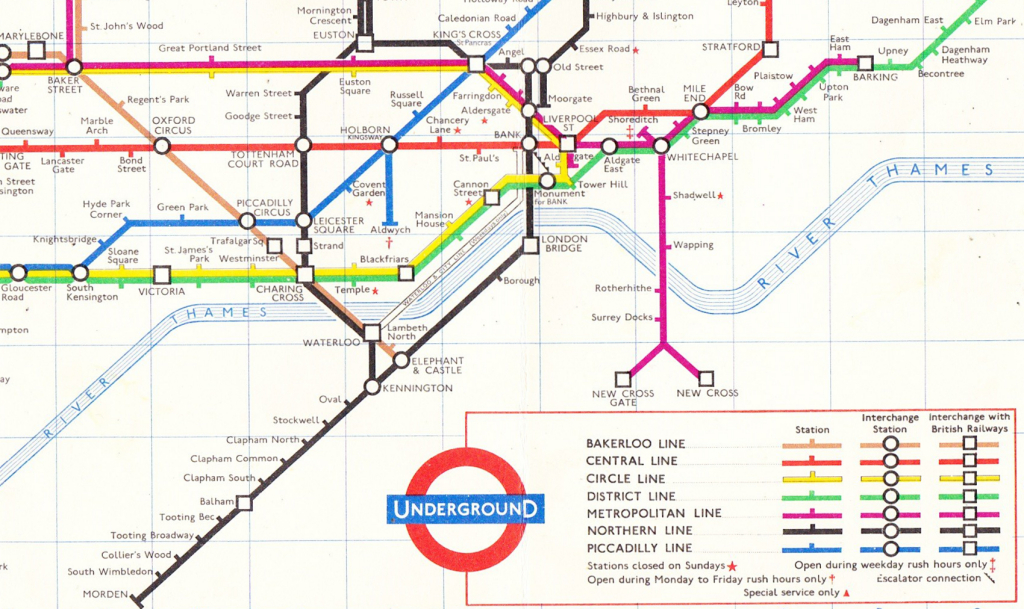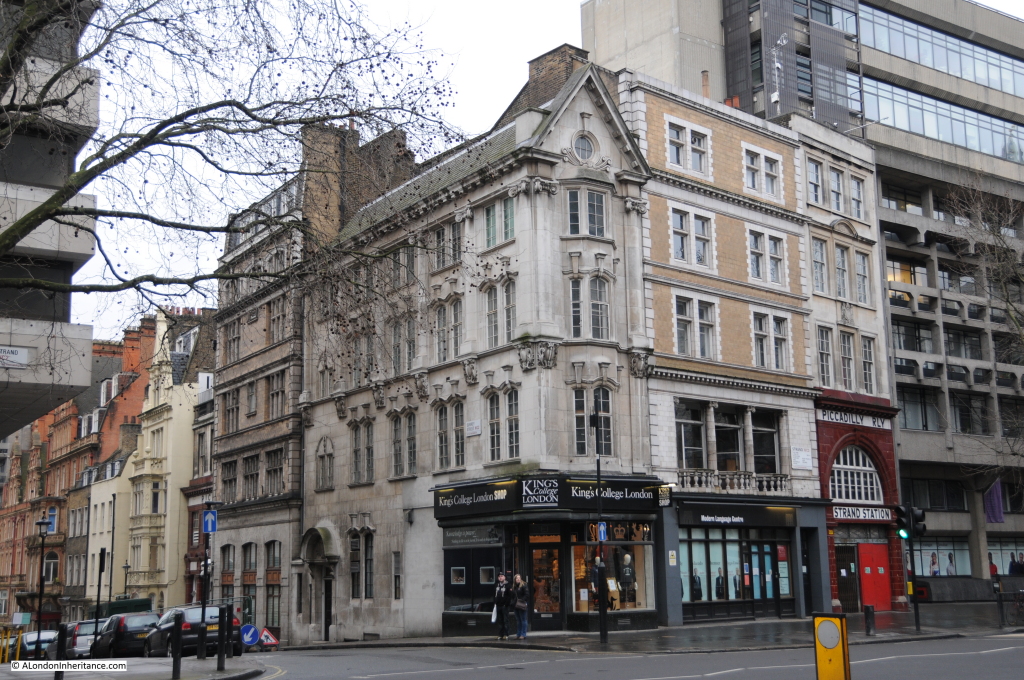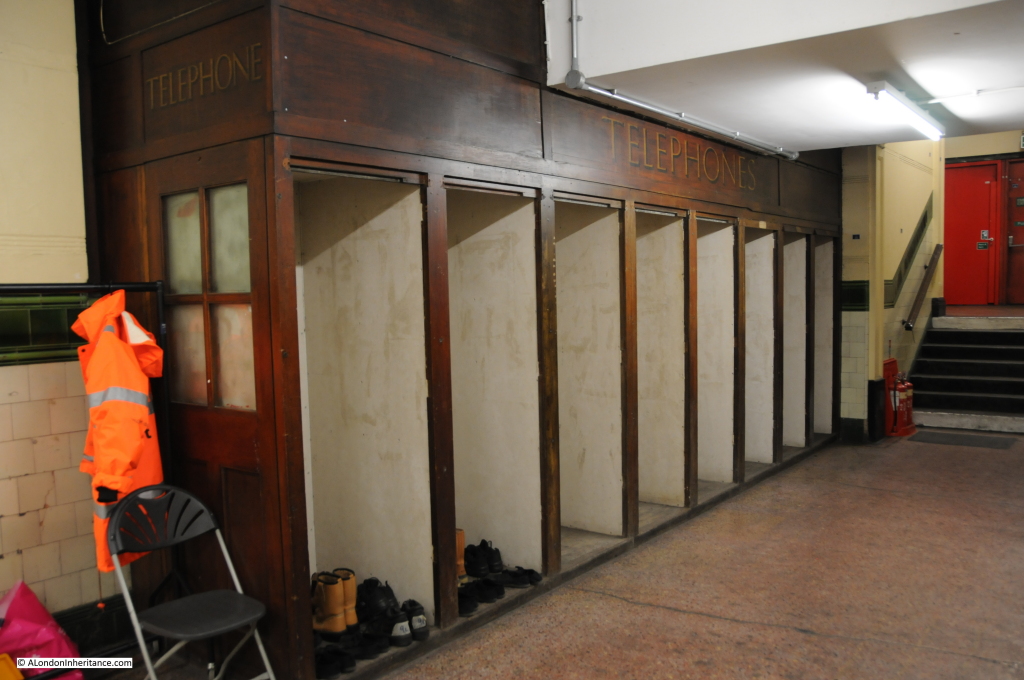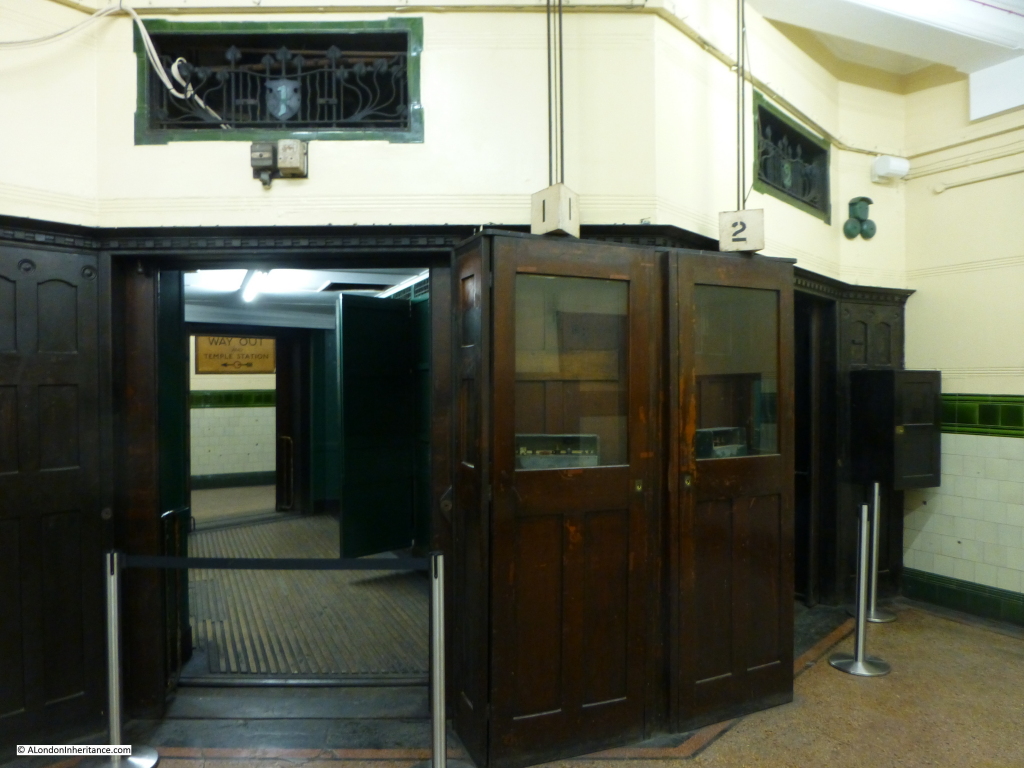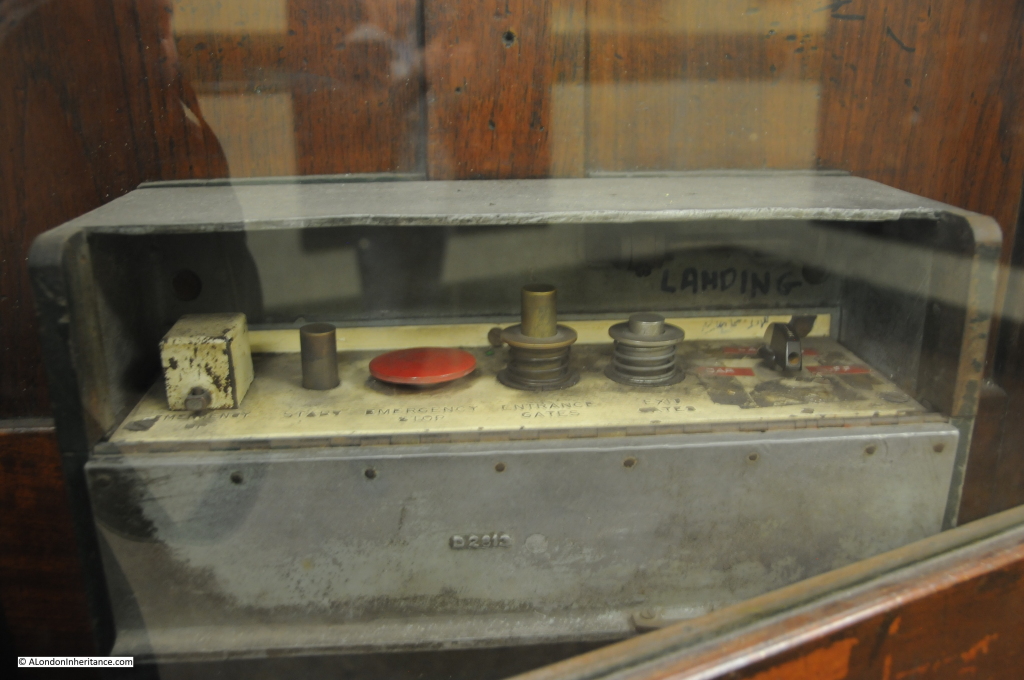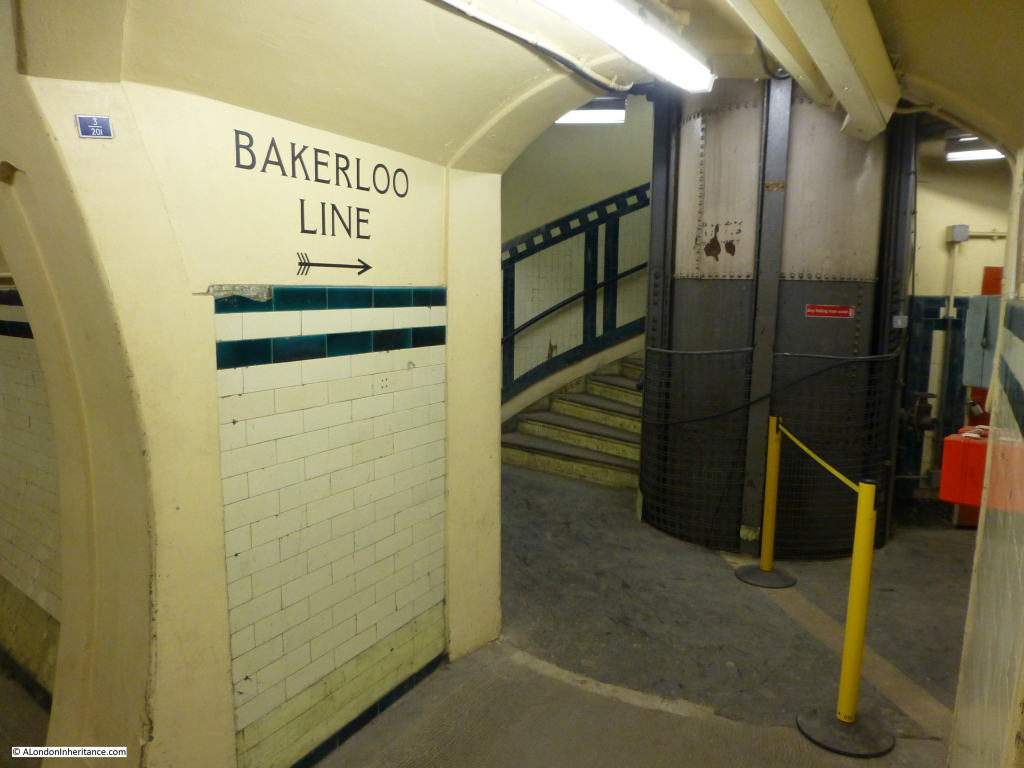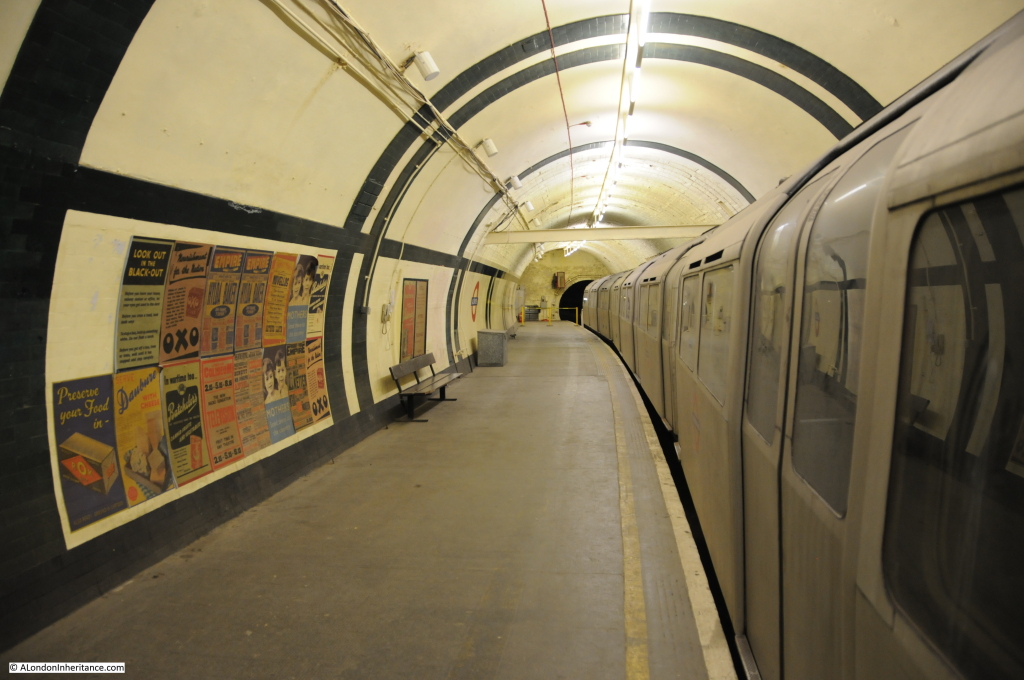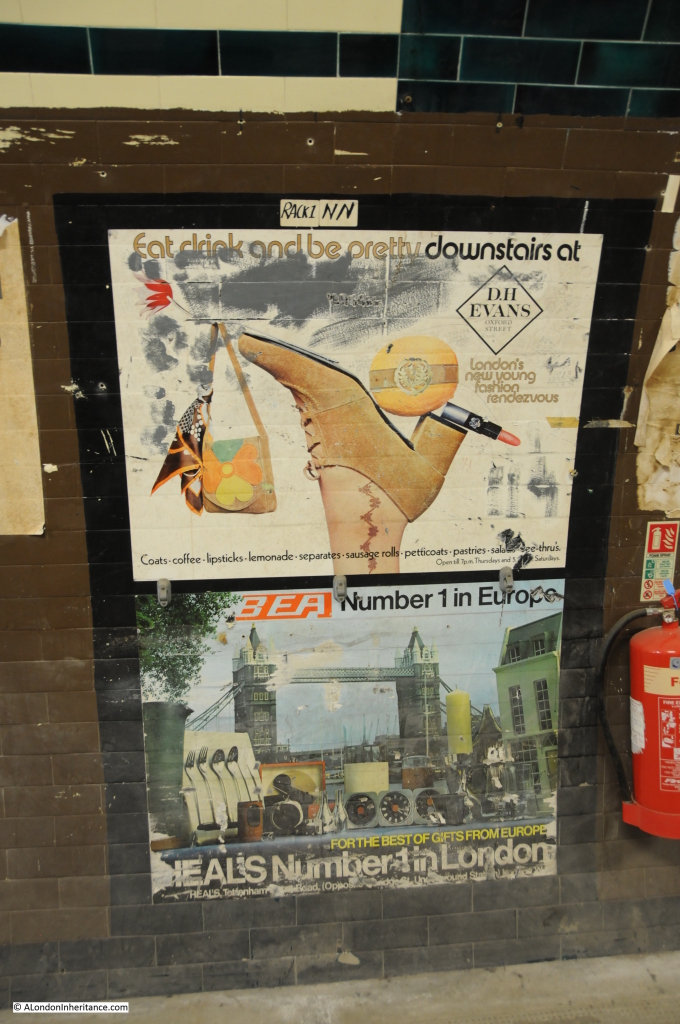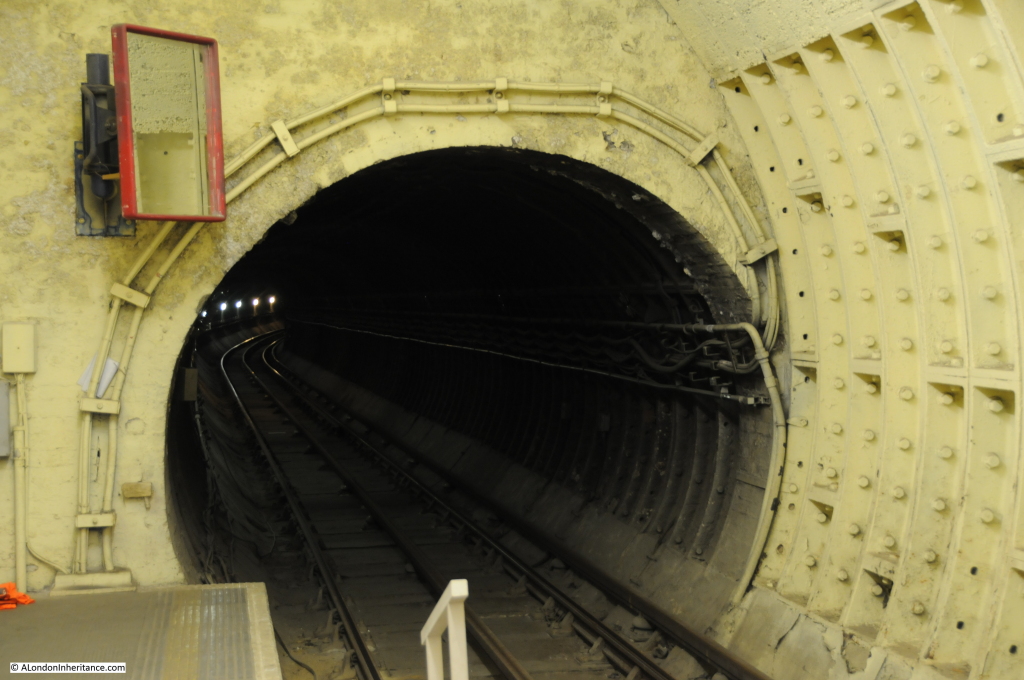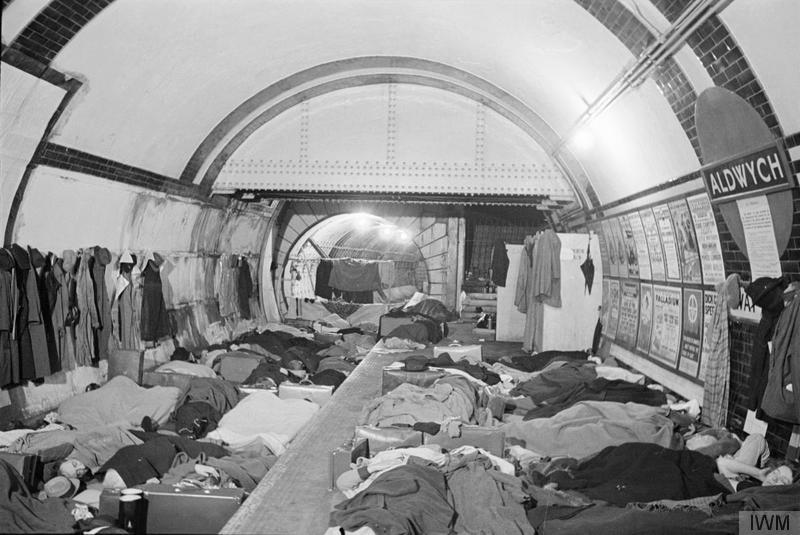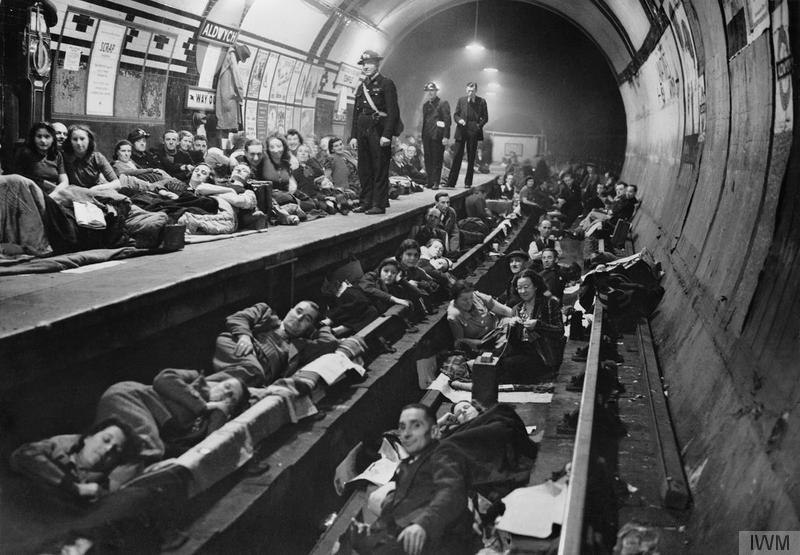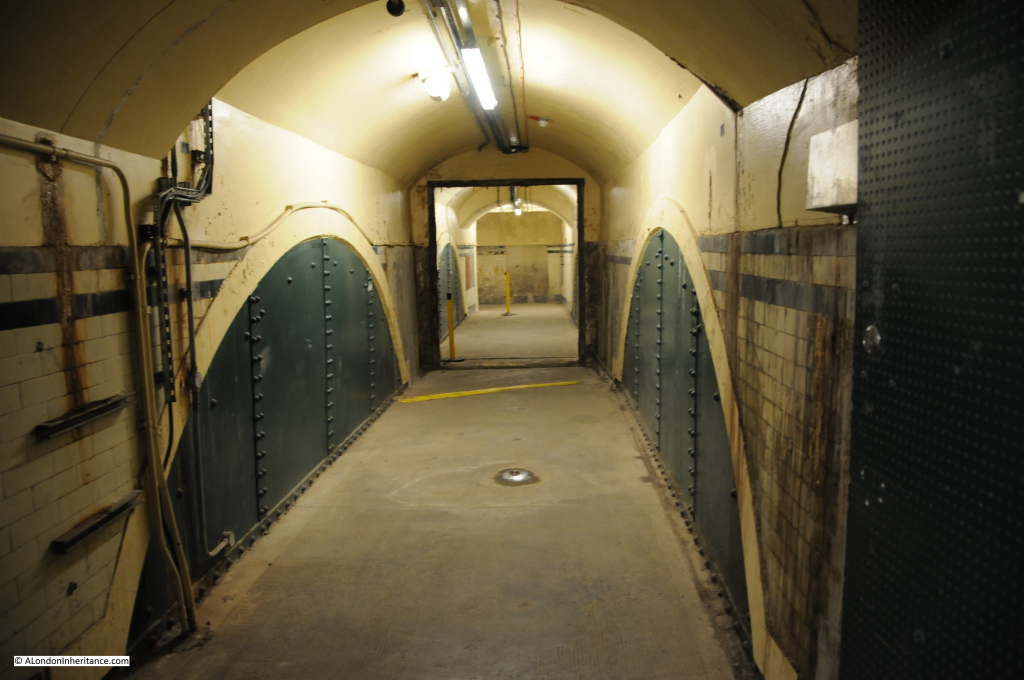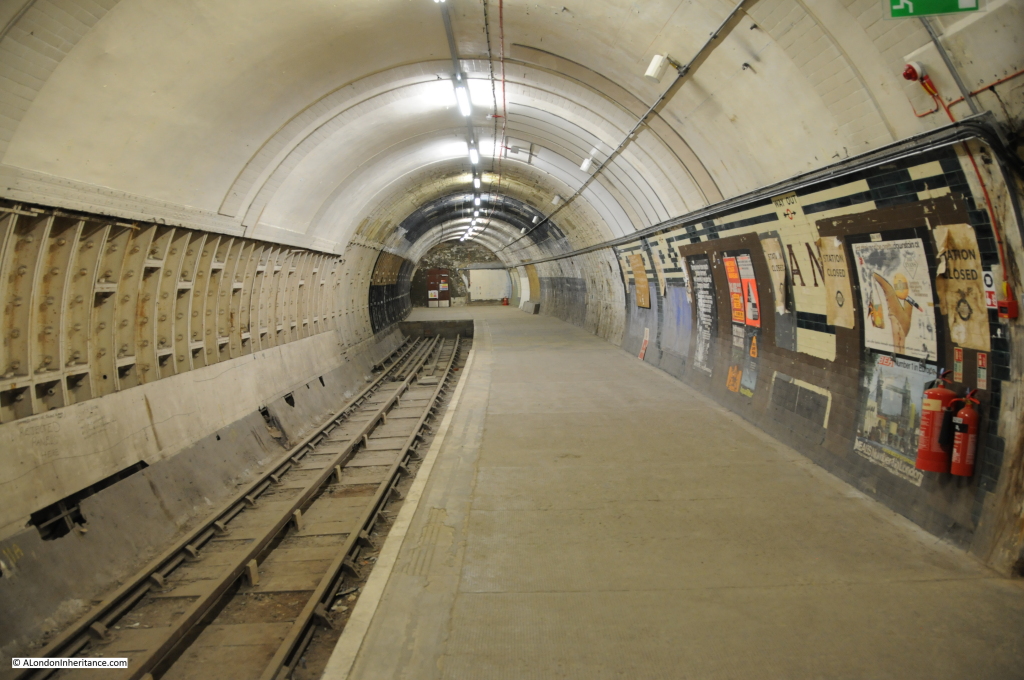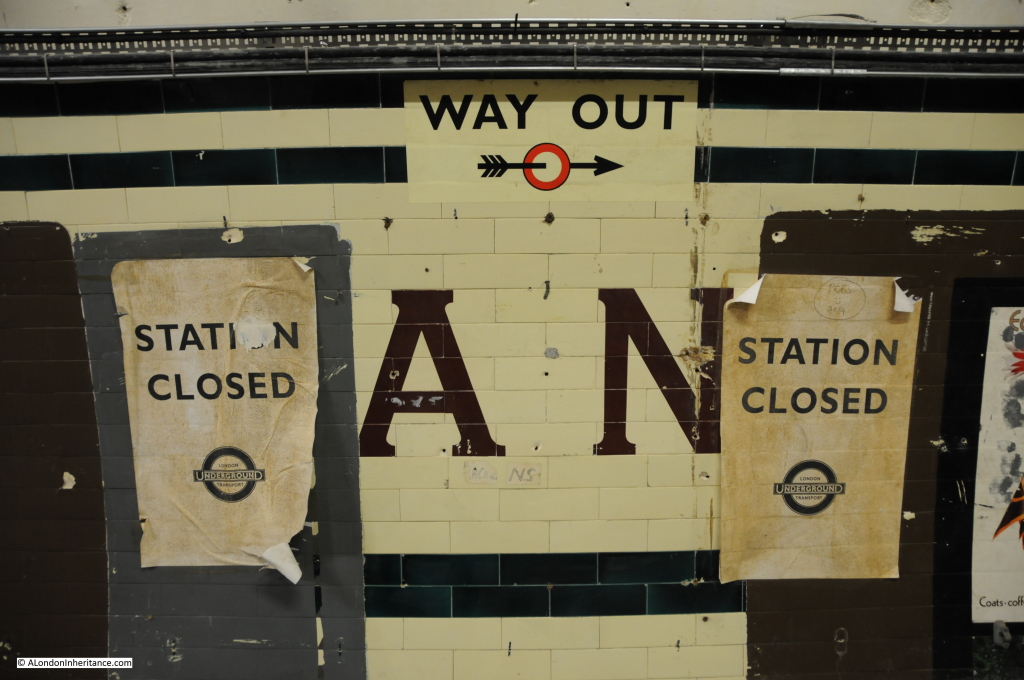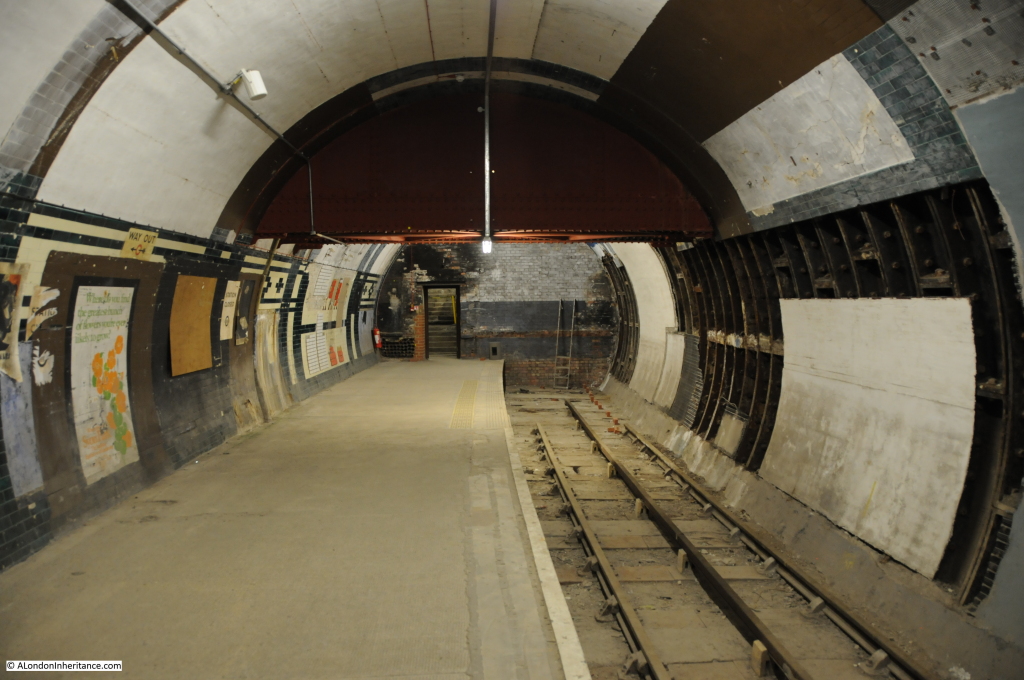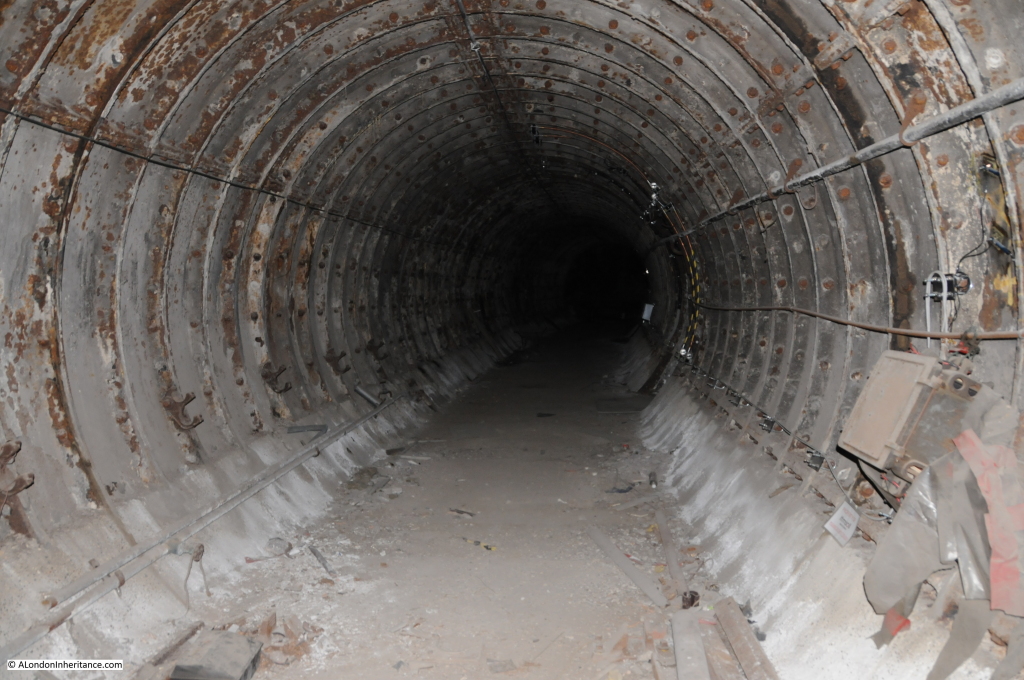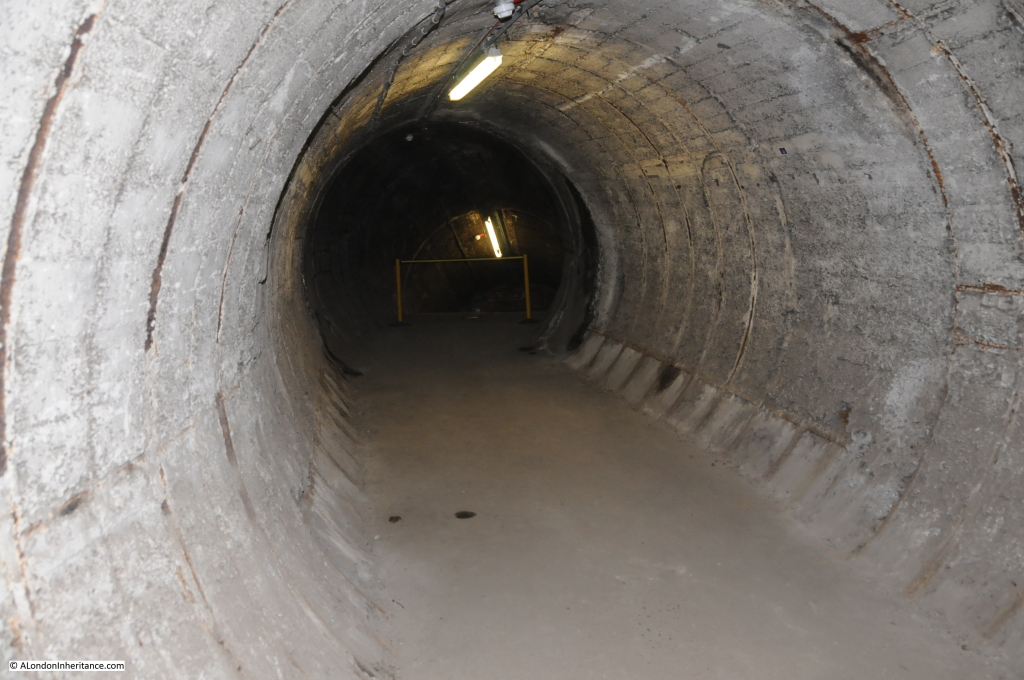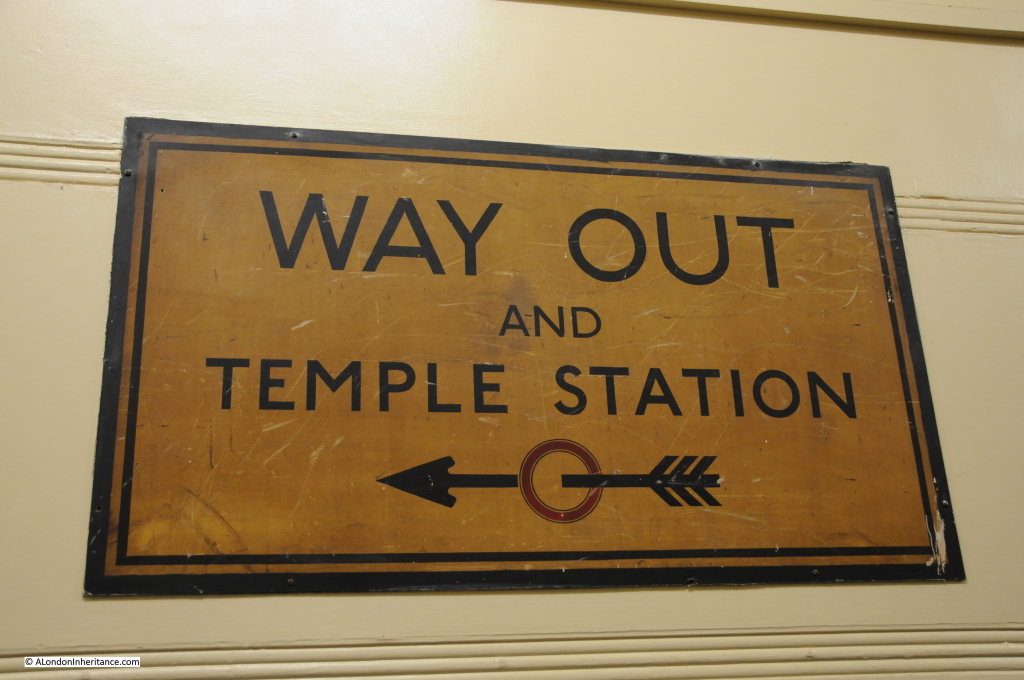I have an underground map from 1963 and whilst there are some very significant differences when compared with an underground map of today, for example the yet to be constructed Jubilee Line, there is one station on the 1963 map that has disappeared.
Find Holborn Station in the above map. This has the Central and Piccadilly lines passing through, and there is a short stub section of the Piccadilly line going to an Aldwych station.
Aldwych station closed to passengers in 1994, however every so often the London Transport Museum organises tours of the station and yesterday I headed to Surrey Street, just of the Strand to take a look inside a station that I have walked past many times, but have never seen inside.
The external entrances of the station are still very visible. The station was built on a block of land between the Strand and Surrey Street with an entrance in each.
The following photo shows the block with the Strand entrance on the right and the Surrey Street entrance just visible on the left.
A close up of the Surrey Street entrance. The tiling is a very distinctive feature on both entrances:
The station was built on the site of Royal Strand Theatre which closed on the 13th May 1905. The site had been a theatre for much of the 19th century. The Royal Strand opened on the 5th April 1858 and was a reconstruction of the Strand Theatre which had previously stood on the site.
The underground station opened in 1907 as the Strand Station. It was renamed Aldwych in 1915.
On entering the station, one is greeted with a now empty set of telephone booths. A reminder of the pre-mobile days when a fixed pay phone was needed to make a call when travelling in London.
The original lifts remain, although they do not work and were one of the reasons why the station closed. The lifts were still mainly the original 1907 equipment and replacement was urgently needed, however the very significant cost of replacing two lifts could not be justified for a station with only 450 passengers a day.
Passenger numbers through the station were very low from opening. This resulted in the ticket office being closed in 1922. Ticket booths were built into the lift cars so as well as operating the lift, the lift man could sell and collect tickets.
Lift control equipment:
Without operational lifts, the platforms are now reached by a spiral staircase of some 160 steps. The base of the staircase:
Platform 1 is the first platform to visit. This has an old Northern Line train in position along the platform. This platform and the train are used for training of the Underground’s Emergency Response Unit and has also been used as a film set for a considerable number of TV programmes and films. The old posters are more recent reproductions as part of creating an authentic platform for filming.
Aldwych was not part of the main Piccadilly Line and only had a shuttle service operating to Holborn.
More advertising posters:
This platform still has an operational track towards Holborn station:
During the war, Aldwych station was a major air raid shelter which could accommodate up to 1500 people and was equipped with first aid facilities and a canteen. The train service to Holborn was suspended on the 22nd September 1940 from when the station was used as a shelter. The following photo is from the Imperial War Museum’s collection (© IWM (D 1675))
The following, also from the Imperial War Museum’s collection (© IWM (HU 44272)) illustrates just how basic and uncomfortable the facilities were, but considerably safer than being above ground during a major raid.
The shelter formally closed as a shelter in May 1945 when war ended. peak usage had been during the early years of the war, with a second peak when the V1 and V2 weapons were targeted at London during the closing year of the war.
To get from platform 1 to platform 2 there is the walkway above the platforms as is typical in many other operational stations:
Platform 2 is very different to platform 1. This platform was closed for train services in 1914 with only platform 1 continuing to be used. Much of this area and the tunnel to Holborn was used as a store-room during the war. Many of the treasures from London museums were moved here for safety, including the Elgin Marbles from the British Museum. This is looking in the direction of Holborn.
On the right can be seen part of the original Strand name of the station, shown below in more detail:
Only the “AN” still visible of Strand. The “Station Closed” posters are modern reproductions.
Platform 2 has also been used by London Underground to create mock-ups of station tiling and decoration in a realistic environment.
The opposite end of the platform, away from the Holborn direction is bricked off, with the exception of a door:
Behind the door is the original 1907 run off tunnel:
If a train did not stop, it would continue into the run off tunnel which had sand laid along the ground to try to slow the train. At the end of the tunnel are the original 1907 buffers and beyond these the tunnel terminates in a brick wall. Hopefully the dragging effect of the sand and the buffers would have done their job.
Adjacent to the run off tunnel are some of the original stairs. believed to have been intended as the original entrance to the platform:
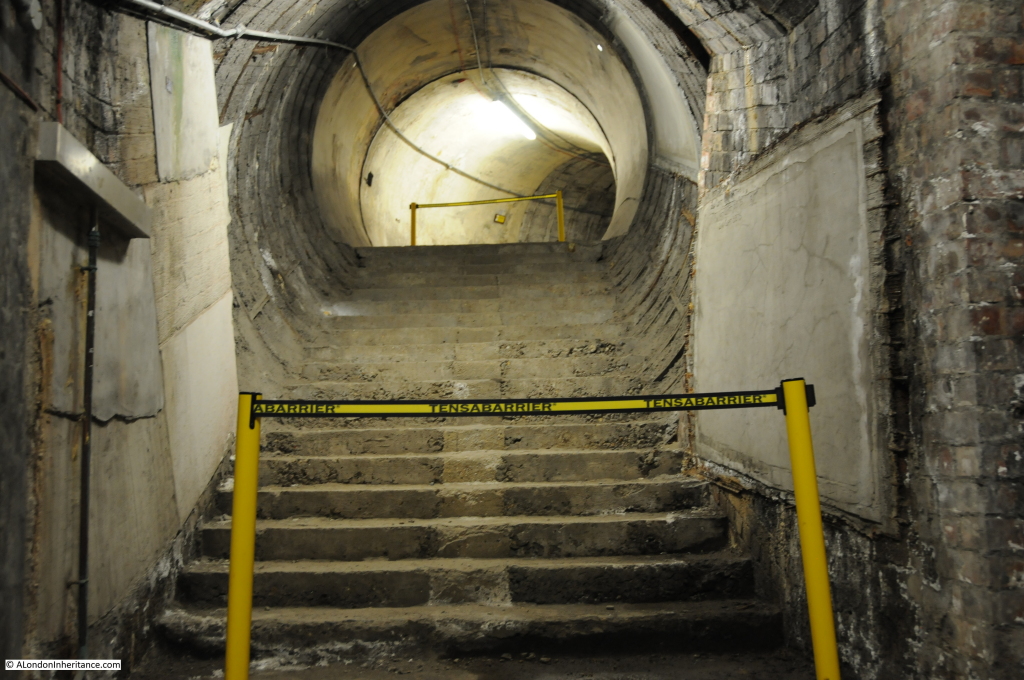 There are also a number of tunnels which were never used by passengers and remain in their basic state. Even when the station was under construction there were concerns that passenger numbers would be low so only the main exit / entrance passages were fully finished.
There are also a number of tunnels which were never used by passengers and remain in their basic state. Even when the station was under construction there were concerns that passenger numbers would be low so only the main exit / entrance passages were fully finished.
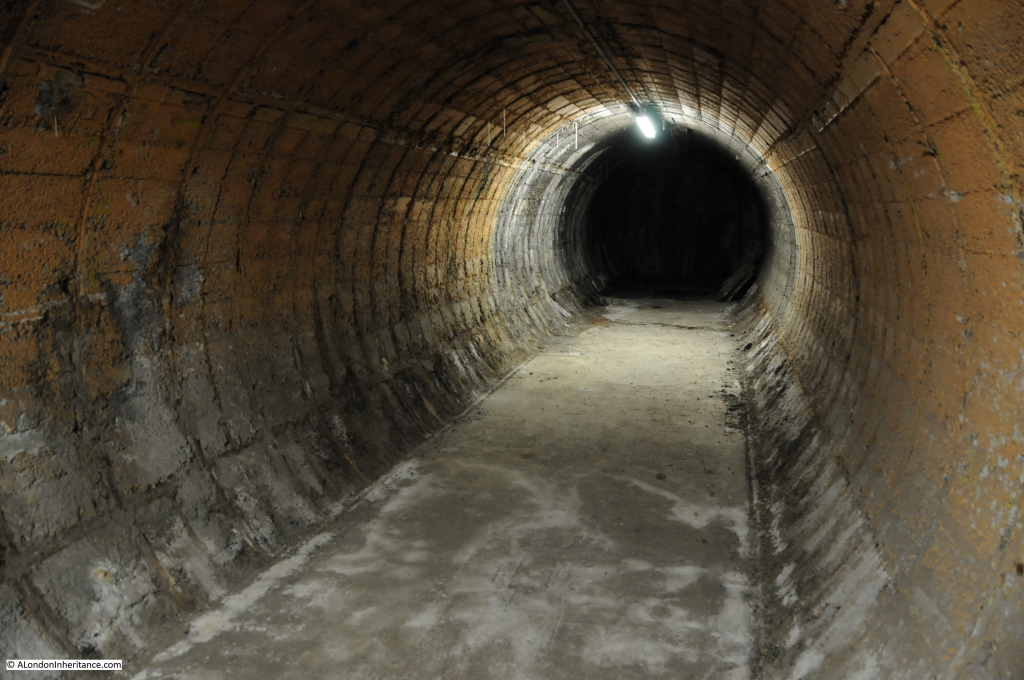 It was here that our guide told the story of why it is possible to feel a breeze, without the passing of any trains through the station. The lead actress in the last play to run at the Royal Strand Theatre before it was demolished to make way for the station was so unhappy that the play that was going so well was being cut short, swore to come back and haunt the station.
It was here that our guide told the story of why it is possible to feel a breeze, without the passing of any trains through the station. The lead actress in the last play to run at the Royal Strand Theatre before it was demolished to make way for the station was so unhappy that the play that was going so well was being cut short, swore to come back and haunt the station.
Sniffer dogs in training at the station have also been known to avoid this area of the station. A nice story, but looking into the dark of these tunnels does allow the imagination to run wild for a moment.
All too soon, it was time to climb back up the 160 steps to ground level and head out into Surrey Street, which as the sign below suggests, provides a short walk down to Temple Station.
A fascinating insight into one of the disused underground stations that are to found scattered across the underground system. As usual, the tour was superbly run by the London Transport Museum, with their highly knowledgeable staff and volunteers as guides.

